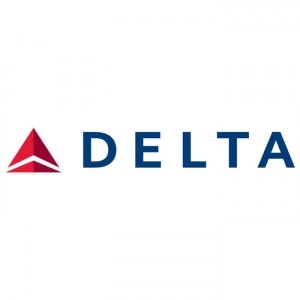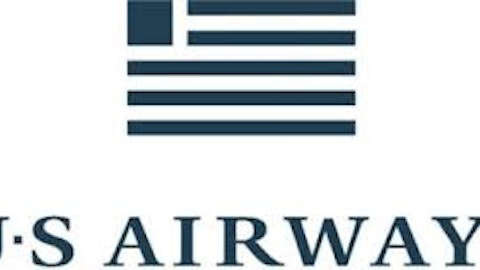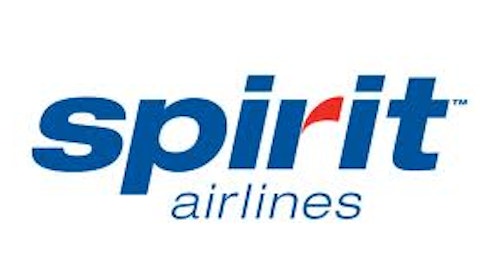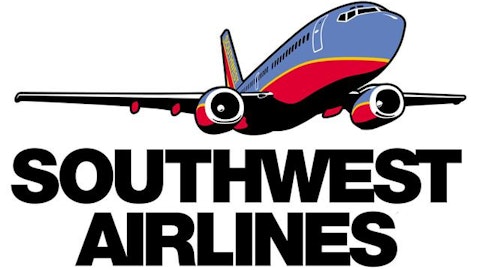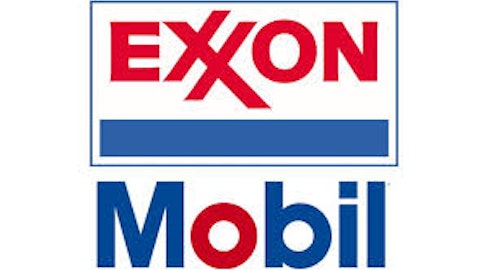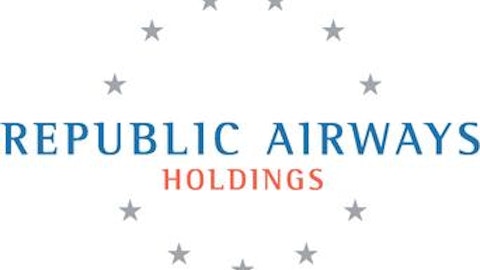The US domestic airline industry has been struggling in the past six or seven years. Apart from a few major airlines, many have been struggling to report profitability. The overall industry has witnessed a significant slowdown, since the financial crises of 2007/08. Delta Air Lines, Inc. (NYSE:DAL) is one of the few that has taken huge initiatives to reduce its cost in order to increase its operating margin. We believe going forward the Delta’s stock should be followed closely by the investors, as it seems set for an upward rally.
1). According to analysis by Trefis, Delta Air Lines, Inc. (NYSE:DAL)’ Cargo SBU contributes 40% towards overall revenues
2). Delta US contributes 27% towards overall revenues
3). Delta International contributes 17% towards overall revenues
Recent history of the US domestic airline industry
US domestic airlines have witnessed an average YOY growth of 31.8% in operating profit since 2006. The operating profits of US airlines took a major hit in the year 2008, when crude oil prices went as high as $147/ bbl. The industry suffered heavily, and to counter the high oil prices, airlines increased fares which led to a dip in demand and an overall loss of $3.7 billion to the US domestic airline industry. The hike in airfares to counter rising oil prices impacted the profitability and brought down the total unit sales for the industry by nearly 10%. The industry has witnessed an overall Compound Annual Growth Rate, or CAGR, of 14.32% in operating profit since 2006, and the last four years have not seen any increasing trend in this growth rate. I expect a robust growth of 50% in 2012 from the previous year, as the first two quarters of 2012 reported a collective operating income of $4.1 billion from domestic operations already. Going by the trend in the last two years, the industry has documented an average growth of 36% collectively in the final two quarters from the first two; I expect the 2012 operating profit from domestic operations of the US airline industry to reach $9.6 billion.
Airline industry striving to bounce back
The leading US airlines are making an effort to achieve historical productivity levels, focusing primarily on solving the labor issues that will eventually lead to aligning work rules and enhancing efficiency levels of the workforce on the front end. Additionally, new investments in technology innovation could present a realistic opportunity for airlines to increase efficiencies in the crew systems. Thus, I estimate robust operating margins as the average domestic fares grow; however, oil prices are expected to remain within the current range of $80/barrel to $120/barrel, resulting in higher operating profit margins.
Delta cost cutting initiative
Several airlines are using archaic and less-fuel efficient planes, which can be damaging in a fuel-costly environment. Therefore, airlines are also focusing on fleet rightsizing. Although initially an extremely costly investment, the new aircraft will generate higher fuel efficiency than old outdated ones as well as reducing operating and maintenance costs.
According to Nasdaq, the airline is cutting down on the number of 50-seat regional jets, or RJs, in its domestic fleet and using instead two-class RJs and narrow body jets like the Boeing 737 that have largely lower operating and maintenance costs relative to 50-seat RJs. Delta is aiming to decrease the number of 50-seat RJs in its fleet to 125 by the year 2015 from 474 in 2009. The impact of this investment will set in over the next three years, as maintenance costs are likely to go down by $400 million per year. In addition, Delta is also striving hard to cut down distribution costs by increasing the share of delta.com to its total bookings, streamlining agent commissions and slashing merchant fees significantly. This will enable the carrier to keep its competitive edge over direct competition, and hence continue at the current growth rate.
Recently Delta also acquired an oil refinery. This strategic vertical integration will help the airline save on refining margins, also known as the “crack spread,” that it currently pays, as jet fuel is one of the most refined forms of fuel. The refinery should produce approximately 40,000 barrels of jet fuel per day by the end of 2013, contributing extensively to Delta’s total jet fuel requirements. This allows Delta to keep its fuel hedging very passive by keeping away from investing in expensive oil derivatives and speculating over oil prices. The strategic vertical integration provides Delta a key competitive advantage going forward.
Strong financials
For the year 2012, net income for airlines grew by 18%, although the airlines did face some challenges in the face of hurricane Sandy and some partial rise in crude oil prices. Nevertheless, these challenges were mitigated by much higher volume of passenger traffic and reducing debt levels.
During 2012, Southwest Airlines Co. (NYSE:LUV)’ shares increased by 8%, contrary to the 35% growth reported by Delta, 27% growth by United Continental Holdings Inc (NYSE:UAL) and a huge 166% gain by US Airways Group, Inc. (NYSE:LCC). This was primarily due to the speculation that US Airways may acquire American Airlines. The current stock price for Delta is trading at its 52 week high. Delta currently holds the second highest market share in the US domestic airline sector and its market size has reported a CAGR of 18.8% in the last four years. Furthermore, it is expected to grow at least by 10% for the next 3 years. On the grounds of a robust outlook, Delta seems to have another 4% to 5% upside and looks poised to break its 52 week high barrier.
Competitor highlights
Southwest holds the highest market share within the American domestic airline industry. The majority of its revenue is generated by passenger flights. It is one of the largest carriers in the US, generating the highest Revenue Passenger Mile, or RPM. United Continental Holdings holds the third highest market share within the domestic sector after the United and Continental merger. Its market share has risen significantly in the last couple of years with an increase in geographical coverage. US Airways has the fifth highest market share as per the RPM. The airline has shown a gradual increase in its market share over the least six years. However the progress has been much less volatile relative to its peers.
Summary
The initiative to reduce its fuel cost by refinery acquisition and resizing of its current fleet suggest that Delta will reduce its operating cost going forward. These investments may reduce the FCF in the short run; however it certainly guarantees a lower operating cost relative to its competition in the future. Several analysts and economists are not expecting any major surprises in oil prices in the next two or three years, this will bring a lot of stability to the overall industry and a much needed impetus to get out of the rut. Delta’s cost restructuring strategy will enable it to gain a massive competitive edge going forward; hence we keep a highly optimistic view on the airlines.
The article Delta – Still Flying High originally appeared on Fool.com and is written by Sujata Dutta.
Copyright © 1995 – 2013 The Motley Fool, LLC. All rights reserved. The Motley Fool has a disclosure policy.
